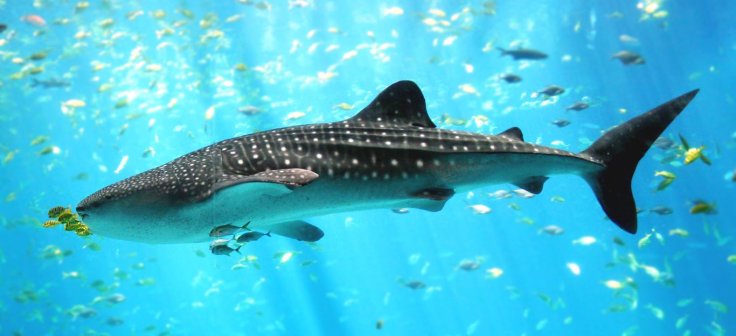Atomic bomb tests conducted during the Cold War have helped scientists for the first time correctly determine the age of whale sharks, a new study reveals.
The discovery, published in the journal Frontiers in Marine Science, will help ensure the survival of the species - the largest fish in the world - which is classified as endangered. "Earlier modelling studies have suggested that the largest whale sharks may live as long as 100 years," said study researcher Mark Meekan from the Australian Institute of Marine Science.
"However, although our understanding of the movements, behaviour, connectivity and distribution of whale sharks have improved dramatically over the last 10 years, basic life-history traits such as age, longevity and mortality remain largely unknown," Meekan added.
Relied on the radioactive legacy of Cold War
For the findings, researchers from Rutgers University in the US, University of Iceland, Australian Institute of Marine Science in Australia, turned to the radioactive legacy of the Cold War's nuclear arms race.
During the 1950s and 1960s, the US, Soviet Union, Great Britain, France and China conducted tests of nuclear weapons. Many of these were explosions detonated several kilometres in the air. One powerful result of the blasts was the temporary atmospheric doubling of an isotope called carbon-14.

Carbon-14 is a naturally occurring radioactive element that is often used by archaeologists and historians to date ancient bones and artefacts. Its rate of decay is constant and easily measured, making it ideal for providing age estimates for anything over 300 years old.
However, it is also a by-product of nuclear explosions. The fallout from the Cold War tests saturated first the air, and then the oceans. The isotope gradually moved through food webs into every living thing on the planet, producing an elevated carbon-14 label, or signature, which still persists.
Used bomb radiocarbon data
This additional radioisotope also decays at a steady rate - meaning that the amount contained in the bone formed at one point in time will be slightly greater than that contained in the otherwise identical bone formed more recently.
Using bomb radiocarbon data, the research team set about testing the carbon-14 levels in the growth rings of two long-dead whale sharks stored in Pakistan and Taiwan. Measuring the radioisotope levels in successive growth rings allowed a clear determination of how often they were created - and thus the age of the animal.
"We found that one growth ring was definitely deposited every year," Meekan said. "This is very important, because if you over- or under-estimate growth rates you will inevitably end up with a management strategy that doesn't work, and you'll see the population crash," Meekan added.
One of the specimens was conclusively established as 50 years old at death - the first time such an age has been unambiguously verified, according to the researchers. "Our study shows that adult sharks can indeed attain great age and that long lifespans are probably a feature of the species. Now we have another piece of the jigsaw added," the researchers noted.









